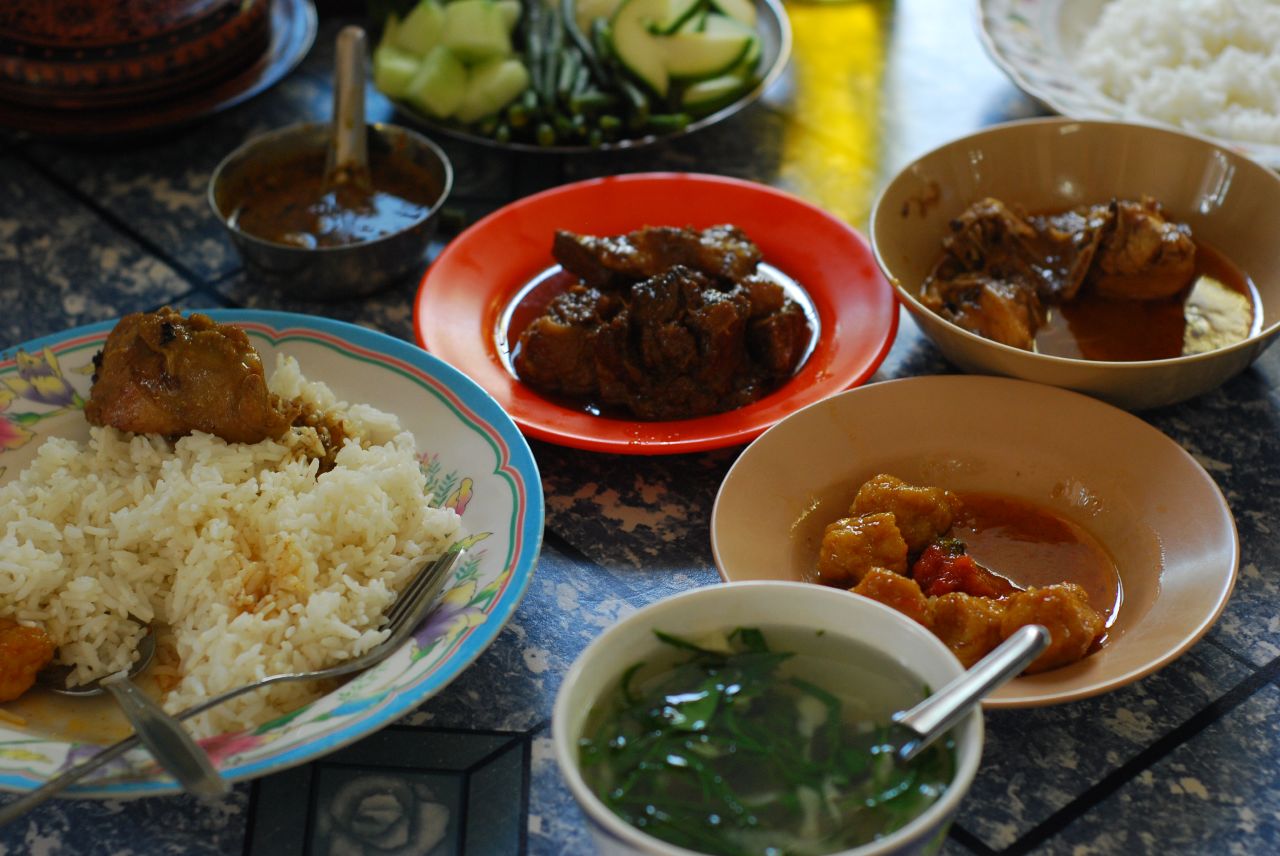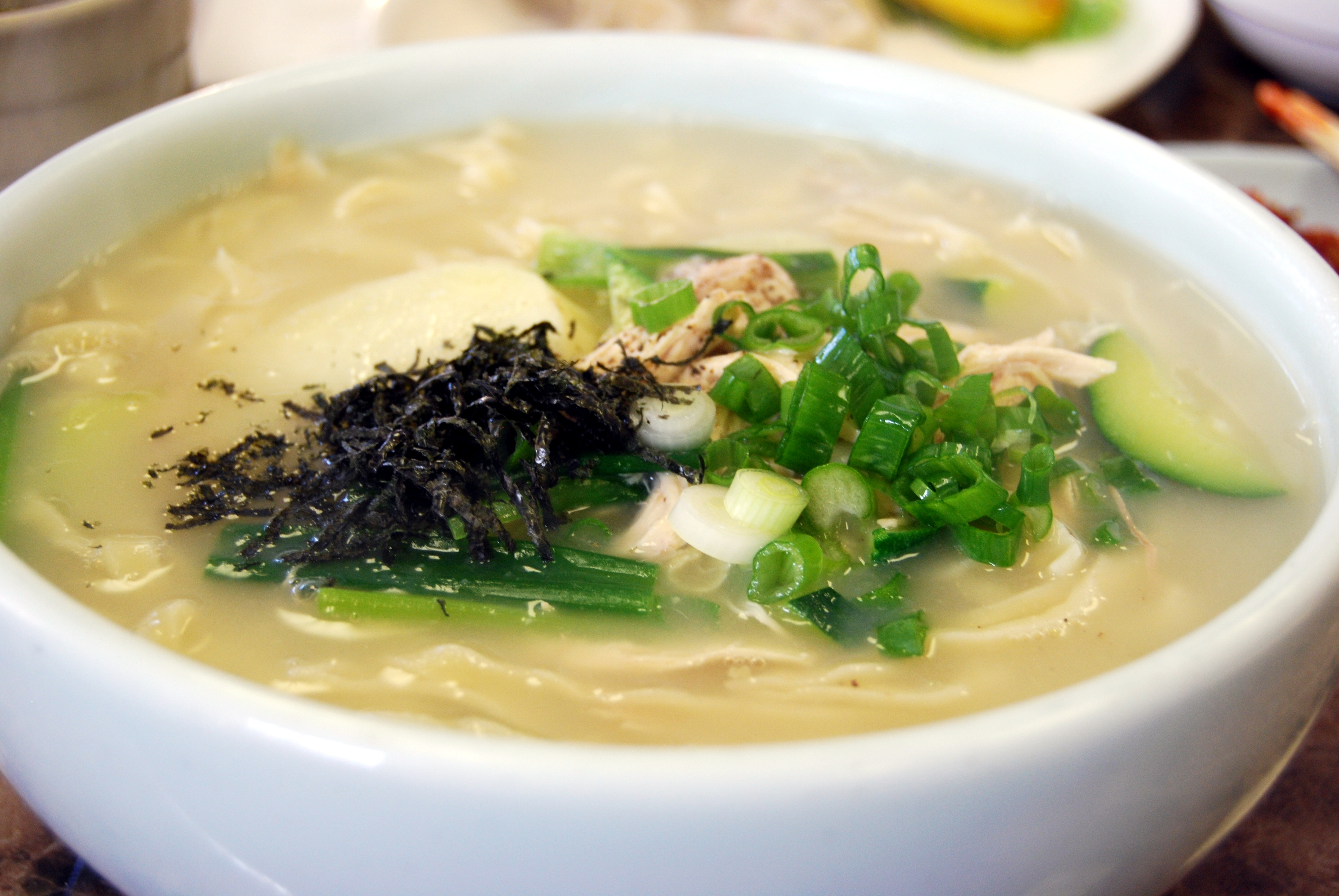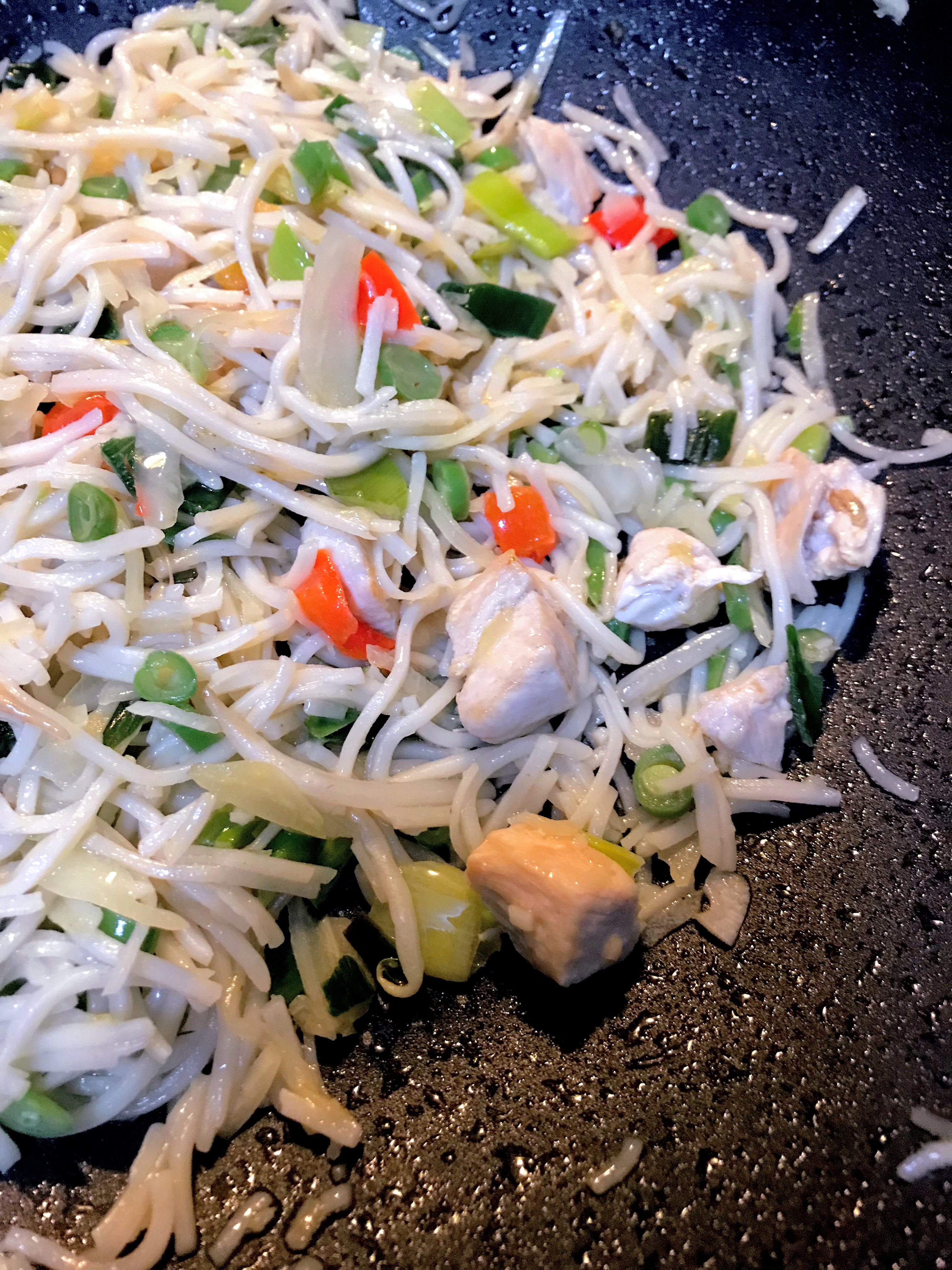|
Kyay Oh
''Kyay oh'' (; ) is a popular noodle soup made with pork and egg in Burmese cuisine. Fish and chicken versions are also made as well as a "dry" version without broth. ''Kyay oh'' is traditionally served in a copper pot. ''Kyay oh'' is made with rice noodles (rice vermicelli or flat rice noodles) and marinated meatballs. The broth is made with pork, chicken, or fish. The pork version, the most popular, uses pork bones and intestine. ''Kyay oh'' is typically served with a tomato and green pepper sauce. Dry ''kyay oh'' salad, called ''kyay oh sigyet'' (ကြေးအိုးဆီချက်), is made without broth and uses sesame oil. It is topped with fried garlic sprinkles. The salad, like the soup, includes meatball, egg, pork brain, green choy and triangular-shaped crispy waffles stuff with meat. Other ingredients include salt, garlic powder, ginger and pepper. The first ''kyay oh'' restaurant, Kyay Oh Bayin, was founded in 1968 in Rangoon (now Yangon). YKKO, founded in 198 ... [...More Info...] [...Related Items...] OR: [Wikipedia] [Google] [Baidu] |
Burma
Myanmar, officially the Republic of the Union of Myanmar; and also referred to as Burma (the official English name until 1989), is a country in northwest Southeast Asia. It is the largest country by area in Mainland Southeast Asia and has a population of about 55 million. It is bordered by India and Bangladesh to its northwest, China to its northeast, Laos and Thailand to its east and southeast, and the Andaman Sea and the Bay of Bengal to its south and southwest. The country's capital city is Naypyidaw, and its largest city is Yangon (formerly Rangoon). Early civilisations in the area included the Tibeto-Burman-speaking Pyu city-states in Upper Myanmar and the Mon kingdoms in Lower Myanmar. In the 9th century, the Bamar people entered the upper Irrawaddy valley, and following the establishment of the Pagan Kingdom in the 1050s, the Burmese language and culture and Theravada Buddhism slowly became dominant in the country. The Pagan Kingdom fell to Mongol invas ... [...More Info...] [...Related Items...] OR: [Wikipedia] [Google] [Baidu] |
Burmese Cuisine
Burmese cuisine encompasses the diverse regional culinary traditions of Myanmar, which have developed through longstanding agricultural practices, centuries of sociopolitical and economic change, and cross-cultural contact and trade with neighboring countries at the confluence of Southeast Asia, East Asia, and South Asia, such as modern-day nations of Thailand, China, and India, respectively. Burmese cuisine is typified by a wide-ranging array of dishes, including traditional Burmese curry, Burmese curries and stews, Burmese salads, accompanied by soups and a medley of vegetables that are traditionally eaten with white rice. Burmese curries are generally distinguished from other Southeast Asian curries in the former's prominent use of an aromatic trio of garlic, shallots, and ginger (in common with South Asian curries), and the general lack of coconut milk. Burmese cuisine also features Indian breads as well as noodles, which are fried or prepared in salads and noodle soups ... [...More Info...] [...Related Items...] OR: [Wikipedia] [Google] [Baidu] |
Rice Vermicelli
Rice vermicelli is a thin form of rice noodle. It is sometimes referred to as "rice noodles" or "rice sticks", but should not be confused with cellophane noodles, a different Asian type of vermicelli made from mung bean starch or rice starch rather than rice grains themselves. Presentation and varieties Rice vermicelli is a part of several Asian cuisines, where it is often eaten as part of a soup dish, stir-fry, or salad. One particularly well-known, slightly thicker variety, called ''Guìlín mǐfěn'' (桂林米粉), comes from the southern Chinese city of Guilin, where it is a breakfast staple. Names Rice vermicelli is widely known in Asia by cognates of Hokkien language, Hokkien 米粉 (''bí-hún'', ). These include ''bīfun'' (Japan), ''bí-hún'' or ''mifen'' (Taiwan), ''bíjon'' or ''bihon'' (Philippines), ''bee hoon'' (Singapore), ''bihun'' or ''mee hoon'' (Malaysia and Indonesia), and ''mee hoon'' (Southern Thailand). Other names include ''num banh chok'' (Cambodia) ... [...More Info...] [...Related Items...] OR: [Wikipedia] [Google] [Baidu] |
Flat Rice Noodle
''Shahe fen'' (, also simply ''hor fun / he fen'' ) or ''guotiao'' (, also kway teow) is a type of wide Chinese noodle made from rice. It is often stir-fried with meat and/or vegetables in a dish called ''chao fen'' (炒粉; pinyin: chǎo fěn); it is also a main ingredient in '' char kway teow''. Names Shahe fen While ''shahe fen'' and ''he fen'' are transliterations based on Mandarin, there are numerous other transliterations based on Cantonese, which include ho fun, hofoen (a Dutch transliteration in Suriname), hor fun, sar hor fun, etc. Guotiao The word ''guǒtiáo'' literally means "ricecake strips". It is also read in Minnan Chinese as ''kóe-tiâu''; it is borrowed into the homophones kwetiau in Indonesia, ''kuetiau'' in Malaysian, and ''kway teow'' in Singapore. It is also called kuaitiao or guay tiew (ก๋วยเตี๋ยว) in Thailand. Differences Minnan people generally consider ''shahe fen'' and ''kway teow'' to be two distinct foods, and ... [...More Info...] [...Related Items...] OR: [Wikipedia] [Google] [Baidu] |
Pork
Pork is the culinary name for the meat of the pig (''Sus domesticus''). It is the most commonly consumed meat worldwide, with evidence of pig animal husbandry, husbandry dating back to 8000–9000 BCE. Pork is eaten both freshly cooked and preserved; Curing (food preservation), curing extends the shelf life of pork products. Ham, Gammon (meat), gammon, bacon, and sausage, pork sausage are examples of preserved pork. Charcuterie is the branch of cooking devoted to prepared meat products, many from pork. Pork is the most popular meat in the Western world, particularly in Central Europe. It is also very popular in East Asia, East and Southeast Asia (Mainland Southeast Asia, Philippines, Singapore, and East Timor). The meat is highly prized in Asian cuisines, especially in China (including Hong Kong) and Northeast India, for its fat content and texture. Some religions and cultures Religious restrictions on the consumption of pork, prohibit pork consumption, notably Islami ... [...More Info...] [...Related Items...] OR: [Wikipedia] [Google] [Baidu] |
Kuyteav
''Kuyteav'' (, ) is a Cambodian noodle soup of Chinese origins consisting of rice noodles with pork stock and toppings. It is a popular breakfast dish across all of Cambodia. The ''kuyteav'' can be found at marketplace stalls, roadside vendors, restaurants and in shophouses across the country, and is distinguished by its clear broth and array of herbs, aromatics and other garnishes and condiments. Etymology The word ''kuyteav'' derives from the Teochew Chinese word ( peng'im: ''guê2diao5'') and refers to cut noodles made from long-grain rice flour (as opposed to glutinous rice flour). Nath, Chuon. Khmer-Khmer Dictionary. Buddhist Institute of Cambodia, 1967 This term also refers to the dish: a rice noodle soup with minced meat and various other toppings and seasonings. In Khmer, ''kuyteav'' is properly pronounced as but is often elided to (romanized as ''k'téav'', ''kătéav'', ''katiĕv'', ''kathiew'', etc.) due to the sesquisyllabic nature of the Khmer langu ... [...More Info...] [...Related Items...] OR: [Wikipedia] [Google] [Baidu] |
Hủ Tiếu
or is a Vietnamese cuisine, Vietnamese dish eaten in Vietnam as breakfast. It may be served either as a soup () or dry with no broth (). became popular in the 1960s in Southern Vietnam, especially in Saigon. The primary ingredients of this dish are pork bones, mixed with diverse kinds of noodles, herbs and other kind of meats. ''Hủ tiếu'' was featured in MasterChef (American TV series), Master Chef US 2013, where Gordon Ramsay mentioned it being on the top of his list and tasked the contestants to prepare a bowl of ''hủ tiếu''. The noodle dish also appeared on the TV show ''Gordon's Great Escape'' in 2010-2011, where Ramsay tried the noodle dish in Cái Răng Floating Market, Cai Rang floating market in Cần Thơ, Can Tho. Origin ''Hủ tiếu'' originated from the Teochew people, Teochew from Guangdong, Guangdong province in China who then emigrated to Vietnam. For the first version of Hủ tiếu, kuay teow, the rice noodles had a softer texture and flat appear ... [...More Info...] [...Related Items...] OR: [Wikipedia] [Google] [Baidu] |
Noodle Soup
Noodle soup refers to a variety of soups with noodles and other ingredients served in a light broth. Noodle soup is a common dish across East Asia, Southeast Asia and the Himalayan states of South Asia. Various types of noodles are used, such as rice noodles, wheat noodles and egg noodles. Varieties East Asia China There are myriad noodle soup dishes originating in China, and many of these are eaten in, or adapted in various Asian countries. * Ban mian (板麵) – Hakka-style, flat-shaped egg noodles in soup. * Chongqing noodles * Cold noodle (冷面/冷麵) – Shanghai-style, flat noodle stirred with peanut butter sauce, soy sauce and vinegar, served cold. * Crossing-the-bridge noodles () – ingredients are placed separately on the table, then added into a bowl of hot chicken stock to be cooked and served. The ingredients are uncooked rice noodles, meat, raw eggs, vegetables and edible flowers. The stock stays warm because of a layer of oil on top of the bowl. Typical cuisi ... [...More Info...] [...Related Items...] OR: [Wikipedia] [Google] [Baidu] |
Rice Noodles
Rice noodles are noodles made with rice flour and water as the principal ingredients. Sometimes ingredients such as tapioca or corn starch are added in order to improve the transparency or increase the gelatinous and chewy texture of the noodles. Rice noodles are most common in the cuisines of China, India and Southeast Asia. They are available fresh, frozen, or dried, in various shapes, thicknesses and textures. Fresh noodles are also highly perishable; their shelf life may be just several days. History The origin of rice noodles dates back to China during the Qin dynasty when people from northern China invaded the south. Due to climatic conditions, the northern Chinese have traditionally preferred wheat and millet which grew in cold weather while the southern Chinese preferred rice which grew in hot weather. Noodles are traditionally made out of wheat and eaten throughout northern China so to adapt, northern cooks tried to prepare "noodles" using rice, thus inventing rice nood ... [...More Info...] [...Related Items...] OR: [Wikipedia] [Google] [Baidu] |
The Myanmar Times
''The Myanmar Times'' ( ), founded in 2000, is the oldest privately owned and operated English-language newspaper in Myanmar. A division of Myanmar Consolidated Media Co., Ltd. (MCM), ''The Myanmar Times'' published weekly English and Burmese-language news journals until March 2015, when the English edition began publishing daily, five days per week. Its head offices are in Yangon, with additional offices in Mandalay and Nay Pyi Taw. As per an announcement at the official website of the newspaper, it stopped nine media services on 21 February 2021 (20 days after the 2021 Myanmar coup d'état) primarily for three months. However, its services are still suspended till now. History Early years ''The Myanmar Times'' was founded by Ross Dunkley, an Australian, and Sonny Swe (Myat Swe) of Myanmar in 2000, making it the only Burmese newspaper to have foreign investment at the time. [...More Info...] [...Related Items...] OR: [Wikipedia] [Google] [Baidu] |
Yangon
Yangon, formerly romanized as Rangoon, is the capital of the Yangon Region and the largest city of Myanmar. Yangon was the List of capitals of Myanmar, capital of Myanmar until 2005 and served as such until 2006, when the State Peace and Development Council, military government relocated the administrative functions to the purpose-built capital city of Naypyidaw in north central Myanmar. With over five million people, Yangon is Myanmar's most populous city and its most important commercial centre. Yangon boasts the largest number of colonial-era buildings in Southeast Asia, and has a unique Downtown Yangon, colonial-era urban core that is remarkably intact. The colonial-era commercial core is centered around the Sule Pagoda, which is reputed to be over 2,000 years old. The city is also home to the gilded Shwedagon Pagoda – Myanmar's most sacred and famous Buddhist pagoda. Yangon suffers from deeply inadequate infrastructure, especially compared to other major cities in Sou ... [...More Info...] [...Related Items...] OR: [Wikipedia] [Google] [Baidu] |
YKKO
YKKO (an abbreviation of Yan Kin Kyay Oh, from ) is a restaurant chain in Myanmar specializing in kyay oh. The moniker comes from Yankin Township in Yangon, where the chain's first restaurant is located. Several YKKO restaurants exist in Yangon.Rough Guides (2013)''Rough Guide Snapshot Myanmar (Burma)'' Penguin. p. 36. The chain also offers Chinese food at its restaurants. It was founded in 1988 in Yangon. As of 2018, YKKO has 35 shops across five cities in Myanmar. References External links * YouTube video of Yangon outletOfficial YKKO YouTube channel Restaurants in Myanmar Restaurants in Yangon {{Myanmar-cuisine-stub ... [...More Info...] [...Related Items...] OR: [Wikipedia] [Google] [Baidu] |






